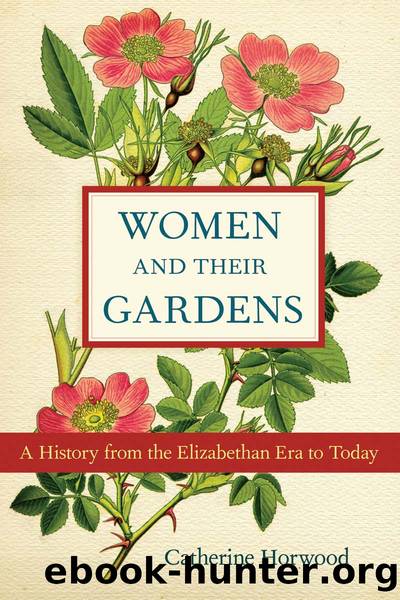Women and Their Gardens by Catherine Horwood

Author:Catherine Horwood
Language: eng
Format: epub
Publisher: Chicago Review Press
Published: 2010-01-15T00:00:00+00:00
Constance Spryâs (1886â1960) rise to fame as a flower arranger was crowned by her decoration of the Queenâs table at the Coronation Banquet in June 1953.
Spryâs style of arranging stirred up an interest in floral design in many women, but it was aimed at those women who either had a large enough garden in which to grow the lovely old roses and flowers she advocated, or the money to buy them. In the 1950s there were many women who became interested in arranging flowers on a more modest scale through the inspiration of Julia Clements. Widowed during the Second World War, Clements began a lecturing career in the late 1940s when Britain was still struggling with extreme shortages, something brought home to her during a fund-raising trip to post-war America. There was ânothing more intimidatingâ, she remembered, âthan a mink coat when you only have a curtain onâ.5 She was inspired by the fact that flowers could be neither rationed nor restricted. âWe canât buy new clothes,â she told her war-weary audience of Womenâs Institute members, âwe canât get new curtains, we canât paint our house, weâve got nothing ⦠except flowers!â6
Beverley Nichols said that the distance between Constance Spry and Julia Clements was âequivalent to the distance between ⦠Mayfair and the Albert Hallâ,7 and there is no doubt that Julia Clements felt she had a message she wanted to get out to British women in a much more public way. In contrast to Spry, Julia Clementsâs style was far more formal. She lectured and wrote about the principles of form, size and shape. She also encouraged women to be competitive. âMusicians and artists give titles to their works, so you make a title for your creation. And then have competitions!â8
Flower-arranging became so popular that within eight years, clubs had sprung up across Britain. âI told them to go for walks in the country and pick things,â remembered Clements. âIt didnât matter what they were as long as they were tall, medium and short ⦠[it] caught on like a prairie fire.â9 In 1949 Mary Pope was also urged to start a flower-arranging group, which she did with the encouragement of Constance Spry herself. Ten years later the groups had grown to such numbers that they had more members than the Royal Horticultural Society. It was the RHS who helped with their running until a separate organisation, the National Association of Flower Arrangement Societies (NAFAS), was founded with the help of Mary Pope and Julia Clements together. Clements was in charge of the rules and regulations of competitive arranging. âI didnât want anyone to come who wanted to know how to do their cocktail party, that wasnât my role in life. My role was to spread it among the masses â I wanted to lift them up.â10 Pope meanwhile promoted non-competitive flower-arranging and pioneered the idea of church flower festivals across the country. Although Clements and Pope did not fall out over this difference in emphasis, Clements insisted that âyou only advance if you have competitionâ.
Download
This site does not store any files on its server. We only index and link to content provided by other sites. Please contact the content providers to delete copyright contents if any and email us, we'll remove relevant links or contents immediately.
How to Be a Bawse: A Guide to Conquering Life by Lilly Singh(7360)
Spare by Prince Harry The Duke of Sussex(5050)
Millionaire: The Philanderer, Gambler, and Duelist Who Invented Modern Finance by Janet Gleeson(4350)
Machine Learning at Scale with H2O by Gregory Keys | David Whiting(4093)
Never by Ken Follett(3757)
Harry Potter 02 & The Chamber Of Secrets (Illustrated) by J.K. Rowling(3612)
The Heroin Diaries by Nikki Sixx(3476)
Urban Outlaw by Magnus Walker(3321)
Harry Potter and the Prisoner of Azkaban (Book 3) by J. K. Rowling(3290)
Fairy Tale by Stephen King(3192)
Japanese Design by Patricia J. Graham(3094)
The Man Who Died Twice by Richard Osman(2977)
The Club by A.L. Brooks(2851)
Stacked Decks by The Rotenberg Collection(2790)
Will by Will Smith(2766)
Harry Potter and the Deathly Hallows (7) by J.K. Rowling(2627)
Churchill by Paul Johnson(2493)
The Chimp Paradox by Peters Dr Steve(2278)
Borders by unknow(2209)
